
William I or Wilhelm I was King of Prussia from 2 January 1861 and German emperor from 18 January 1871 until his death in 1888. A member of the House of Hohenzollern, he was the first head of state of a united Germany. He was de facto head of state of Prussia from 1858, when he became regent for his brother Frederick William IV. During the reign of his grandson Wilhelm II, he was known as Wilhelm the Great.
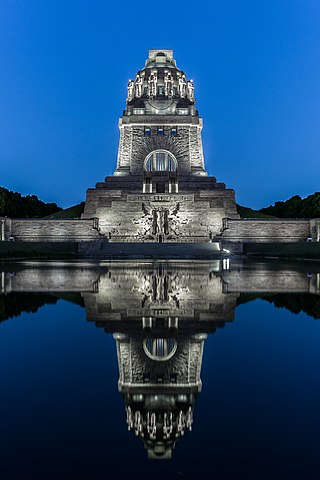
The Monument to the Battle of the Nations is a monument in Leipzig, Germany, to the 1813 Battle of Leipzig, also known as the Battle of the Nations. Paid for mostly by donations and the city of Leipzig, it was completed in 1913 for the 100th anniversary of the battle at a cost of six million goldmarks.

Franz Metzner was an influential German sculptor, particularly his sculptural figures integrated into the architecture of Central European public buildings in the Art Nouveau / Jugendstil / Vienna Secession period. His style is difficult to classify.
Nikolaus Geiger was a German sculptor and painter.
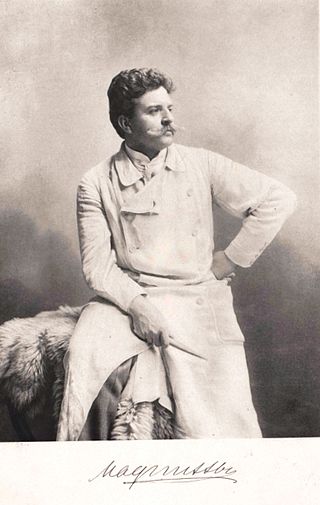
Harro Magnussen was a German sculptor.
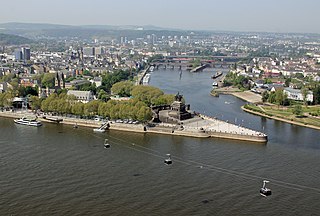
Deutsches Eck is the name of a promontory in Koblenz, Germany, where the Mosel river joins the Rhine. Named after a local commandry of the Teutonic Order, it became known for a monumental equestrian statue of William I, first German Emperor, erected in 1897 in appreciation of his role in the unification of Germany. One of many Emperor William monuments raised in the Prussian Rhine Province, it was destroyed in World War II and only the plinth was preserved as a memorial. Following German reunification, a replica of the statue was erected on the pedestal after controversial discussions in 1993. It is today a Koblenz monument and a popular tourist attraction.

The Kyffhäuser Monument, also known as Barbarossa Monument, is an Emperor William monument in the Kyffhäuser mountain range in the German state of Thuringia. It was erected from 1890 to 1896 atop the ruins of the medieval Kyffhausen Castle near Bad Frankenhausen.
The Stern Conservatory was a private music school in Berlin with many distinguished tutors and alumni. The school is now part of Berlin University of the Arts.

A large number of monuments were erected in Germany in honour of Emperor William I. As early as 1867 the Berlin sculptor, Friedrich Drake, had created the first equestrian statue, that portrayed William I as the King of Prussia. To date the Prussian Monument Institute has recorded:

Gustav Christian Friedrich Behrens was a German sculptor.
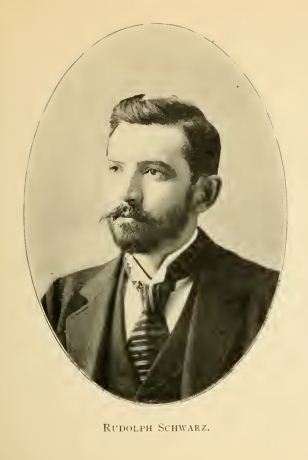
Rudolf Schwarz, sometimes spelled Rudolph Schwarz, was an Austrian-born American sculptor. He emigrated to Indianapolis in December 1897 to help complete the Soldiers' and Sailors' Monument in Indianapolis, Indiana, which was designed by German architect Bruno Schmitz. He was invited to work on the project by Karl Bitter, with whom he had worked in Austria.
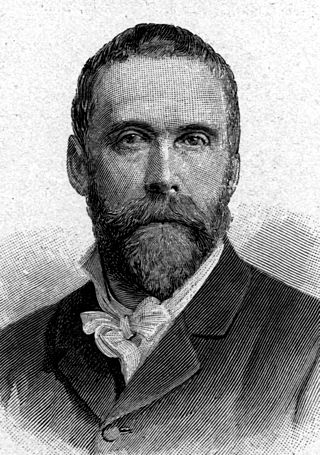
Syrius Eberle was a German sculptor and art professor.

Carl Kundmann was an Austrian sculptor, best known for his works which adorn the area around the Ringstraße project.

Joseph Johann Ludwig Uphues was a German sculptor.

Ludwig Cauer was a German sculptor.

Wilhelm Georg Johannes Wandschneider was a German sculptor.

The Emperor William Monument, near the town of Porta Westfalica in the North Rhine-Westphalian county of Minden-Lübbecke, is a colossal monument above the Weser gorge of Porta Westfalica, the "Gateway to Westphalia". It was erected to honour the first German Emperor, William I (1797–1888), by the then Prussian Province of Westphalia between 1892 and 1896 and emerged against the background of a rising German national identity. The monument, which is around 88 metres (289 ft) high, is classified as one of Germany's national monuments.

Hermann vom Endt was a German architect.

Michel Lock, originally Hubert Michael Lock was a German sculptor.





































